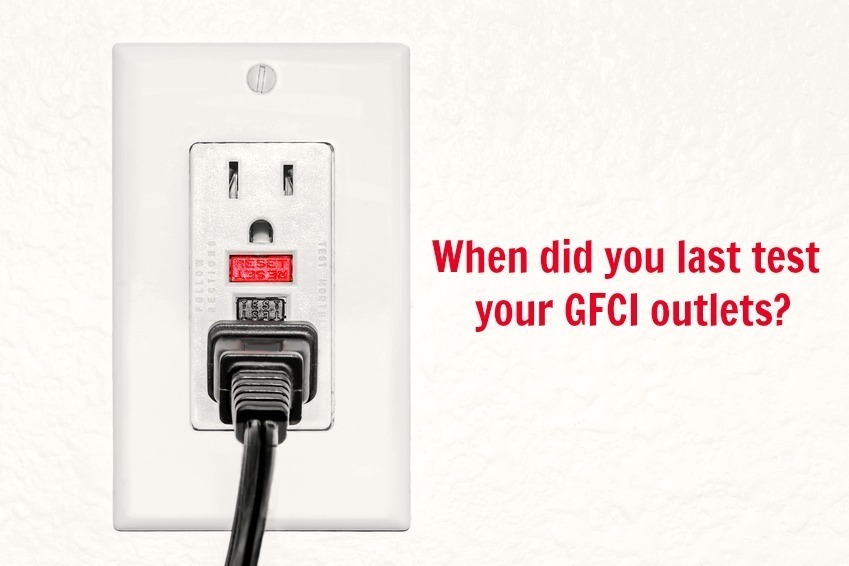Eastern North Carolina Important: COVID-19 Announcement.

Have you notice the electrical receptacles in kitchens or bathroom that have “Test” and “Reset” buttons? These receptacles are ground fault circuit interrupters or GFCI. They are one of the most important safety features in homes protecting people from electrocution.
What is the purpose of a Ground Fault Circuit Interrupter (GFCI)? A ground fault occurs when there is a break in the grounding path. The electrical current may then take an alternative path to the ground through a person resulting in serious injuries or death. A GFCI is an outlet that monitors the flow of electricity through the electrical circuit. The GFCI detects changes in current, as little as 5 milli-amperes, flowing into and out of the circuit. The ground fault circuit interrupter will automatically cut off the flow of electricity if there is any variation in the current in as little as 1/10 to 1/40 of a second.
Most people are not aware that GFIC are sensitive electronic devices. After 10 years or so, the circuitry can wear out and no longer function as intended. The electrical receptacle may continue to function even if the interrupter no longer functions. The “Test” button on the GFCI receptacle does not necessarily indicate that there is anything wrong.
All GFCI outlets should be tested monthly to make sure they are in good working condition. First, purchase a special GFCI circuit tester from the local hardware or large home store. Plug in the tester and press the “Test” button which will turn off the power to the circuit. This should cause the “Reset” button to pop up. If the power goes off, the GFCI is working properly. Don’t forget to push the “Reset” button to restore power and protection. If the power doesn’t go off, the GFCI outlet needs to be replaced.
GFCI protection has been required in houses in the United States since 1973, first on receptacles on the exterior of the house. Over time, building code required GFCI outlets to be located in bathrooms, garages, kitchens, crawl spaces, unfinished basements, and at wet bars and laundry sinks. Because of the expense and labor, one GFCI outlet feeds protection to other nearby outlets that are also required to be protected. This can make for a mystery when trying to locate a GFCI that has tripped causing a group of outlets to go dead.
Homeowners should locate all of the GFCI outlets. This task may require persistence. For example, the kitchen outlets may be controlled by a GFCI outlet located in the dining room that has a large piece of furniture in front of it. Bathroom and exterior outlets may be controlled by a GFCI receptacle in the garage. Garage outlets are easily missed because of personal belongings stacked in front of outlets and also because garage outlets are placed several feet above the floor.
It is worth noting that ground fault circuit interrupters protect from the most common forms of electrical shock, fires from overheating and the destruction of wire insulation; however, they do not protect from direct electrical line contact hazards.
The protection of you and your family is of the utmost importance. If you don’t feel comfortable dealing with electrical issues, hire a licensed electrical contractor.
Please Like Us on our Facebook page or Follow Us on Google Plus
If you have questions about your home’s foundation or foundation repairs, contact Atlantic Foundation and Repair at 919-855-0855.